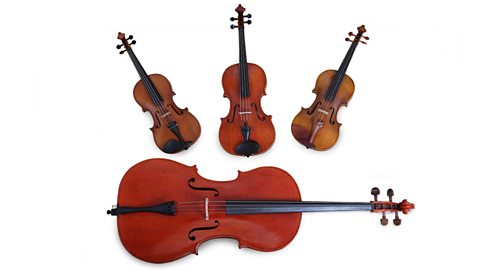Music in the Classical period
Music in the Classical period1750 - 1825. was significantly different from the music of the Baroque period1600 - 1750. . It has a directness of expression through clear melodic phrases that are supported by clear cadenceThe sequence of chords used to end a musical phrase. Its textures also became much less complex and clearer. This was a reaction against the complicated polyphonicTwo or more melodies or parts that play at the same time, weaving in and out of each other. music of the Baroque era.
Features of Classical period music
The most common identities were:
- less complex melodies
- balanced phrases
- mainly homophonicA texture based on chords. texture
- more variety and contrast
- wider range of dynamicsRefers to the softness or loudness of a piece of music.
- harpsichord replaced by the piano
- elegant and graceful melodies
The string quartet
The string quartet became very popular in the Classical period and all of the main composers, including Mozart, wrote music for such an ensemble.
A string quartet is made up of two violins, viola and cello.
- two violins - high pitched and plays in the treble clef range
- a cello - has range notated for bass clef
- a viola - pitched in the alto clef
The structure of a string quartet
Music written for a string quartet in the Classical period would follow this order of movements.
- A fast movement, indicated with an allegroLively and fast. tempo marking and usually in sonata formA form used in classical sonatas, symphonies and concertos which consists of exposition, development and recapitulation sections..
- A slow movement often in ternary formA musical form in which the opening section returns after a central contrasting section. or theme and variationsThe theme is a melody and a number of variations of this melody are created..
- A moderate dance movement often a minuet and trio
- A fast movement either in sonata form or rondoA music structure that continually returns to the A section, eg A-B-A-C-A.
